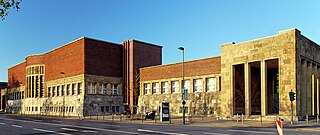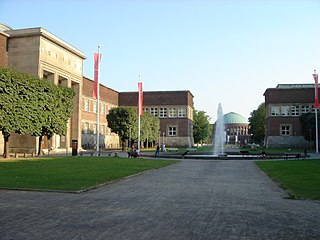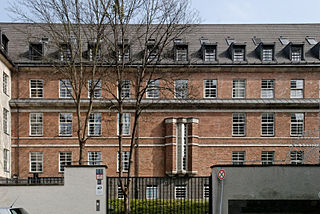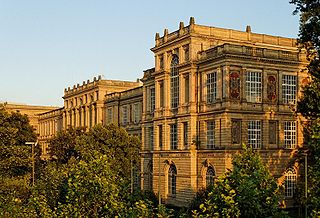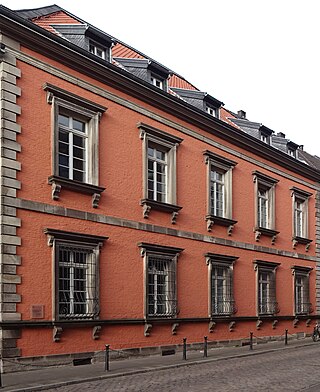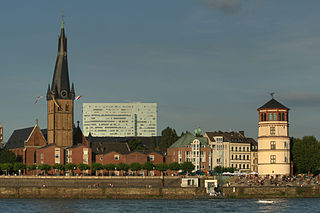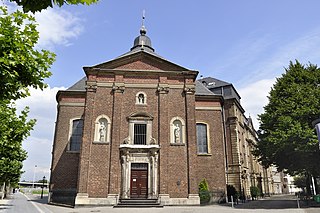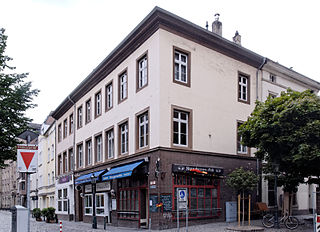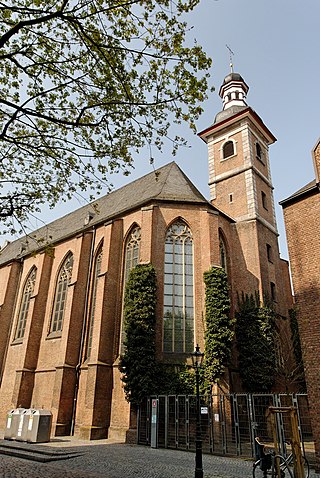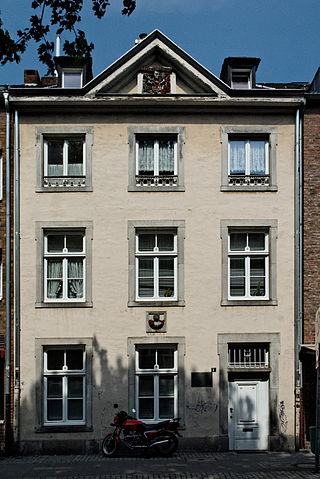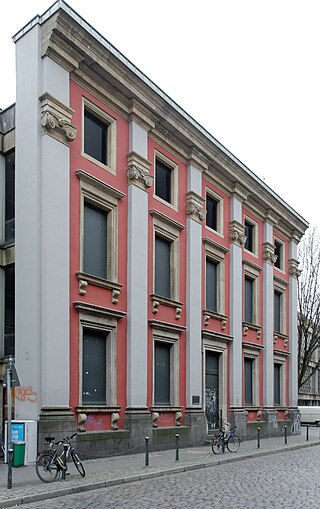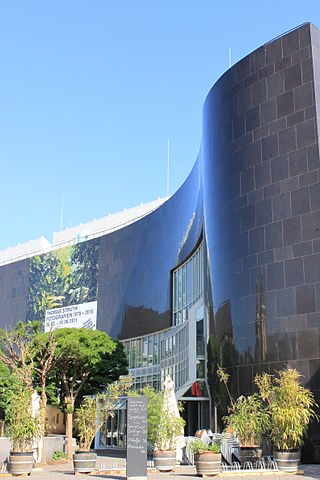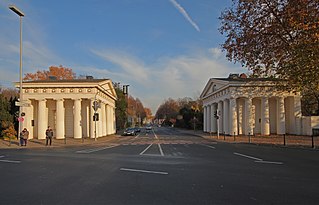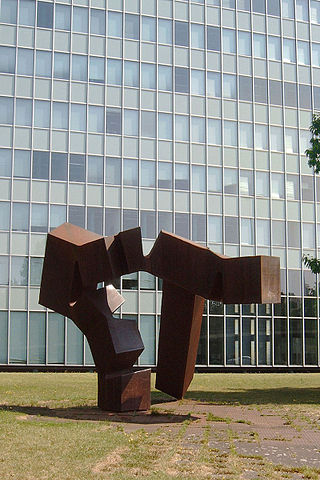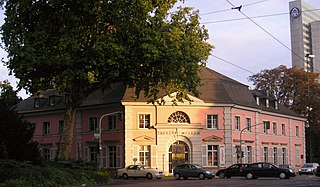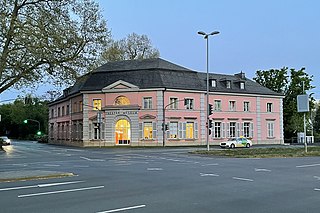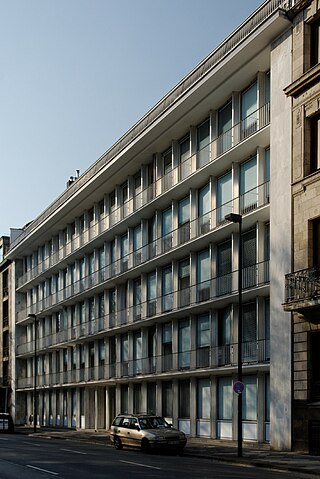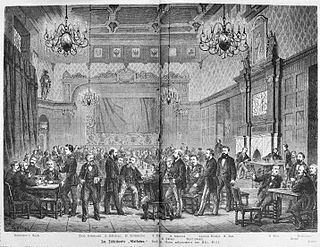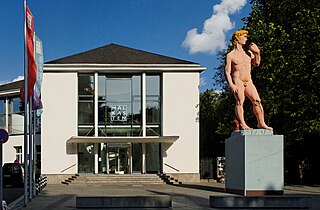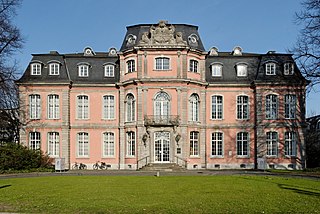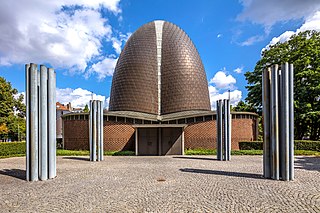Self-guided Sightseeing Tour #2 in Dusseldorf, Germany
Legend
Guided Free Walking Tours
Book free guided walking tours in Dusseldorf.
Guided Sightseeing Tours
Book guided sightseeing tours and activities in Dusseldorf.
Tour Facts
6 km
72 m
Experience Dusseldorf in Germany in a whole new way with our free self-guided sightseeing tour. This site not only offers you practical information and insider tips, but also a rich variety of activities and sights you shouldn't miss. Whether you love art and culture, want to explore historical sites or simply want to experience the vibrant atmosphere of a lively city - you'll find everything you need for your personal adventure here.
Activities in DusseldorfIndividual Sights in DusseldorfSight 1: Tonhalle Düsseldorf
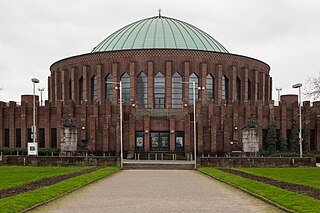
Tonhalle Düsseldorf is a concert hall in Düsseldorf. It was built by the architect Wilhelm Kreis. The resident orchestra, the Düsseldorfer Symphoniker, play symphonic repertoire at the Tonhalle as well as opera at the Deutsche Oper am Rhein.
Wikipedia: Tonhalle Düsseldorf (EN), Website, Heritage Website
Sight 2: NRW-Forum Düsseldorf
The NRW Forum Wirtschaft und Kultur, formerly the Museum für Industrie und Wirtschaft, is a museum in Düsseldorf, the state capital of North Rhine-Westphalia, dealing with the development and the economy of the state of North Rhine-Westphalia or regions within it, such as the Rhine-Ruhr-region. Today it is part of the Museum Kunstpalast.
Sight 3: Denkmal der 39er
In the North Rhine-Westphalian state capital of Düsseldorf, the Ehrenhof, is the name given to an expressionist ensemble of buildings and gardens that was created for the GeSoLei exhibition in 1926. Today, as a museum, it encloses an inner courtyard with the buildings of the Kunstpalast and the NRW Forum and extends axially over a garden parterre to the Tonhalle Düsseldorf, a concert and multi-purpose hall covered with a dome.
Sight 4: Phoenix-Haus
The Phoenix-Haus is a listed administrative building at Fritz-Roeber-Straße 2 in Düsseldorf's old town, which was built from 1923 to 1926 for Phoenix AG für Bergbau und Hüttenbetrieb on the former Eiskellerberg, served as an employment office for almost seven decades and has been the headquarters of the Düsseldorf public prosecutor's office since 2002.
Sight 5: Kunstakademie
The building of the Academy of Fine Arts at Eiskellerstraße 1 in Düsseldorf-Altstadt was built between 1875 and 1879 by Hermann Riffart in the historicist style of the Italian Renaissance. On the Rhine side of the building is a modern studio building of the art academy designed by Rudolf Schwarz.
Wikipedia: Kunstakademie Düsseldorf (Gebäude) (DE), Heritage Website
Sight 6: Palais Schaesberg
The Palais Schaesberg at Ritterstraße 16–16a in Düsseldorf is a listed building. The building is now part of the Ursula Gymnasium complex. With its "clear proportions and elaborately designed window surrounds", it is reminiscent of the façade of Bensberg Castle, the main work of the court architect Matteo Alberti, and was attributed to him before Simon Sarto could be identified as the architect after evaluation of documents from the Schaesberg archive.
Sight 7: Lieferhaus
The Löwenhaus or, as the house inscription says, Lieferhaus, Liefergasse 9 in Düsseldorf, is a listed building. It is the oldest secular building in Düsseldorf in Stein; the building core is Gothic.
Sight 8: St. Lambertus
St. Lambertus is one of four Roman Catholic churches in Düsseldorf's Old Town on Stiftsplatz. It is the parish church of the enlarged parish of St. Lambertus Düsseldorf, which was created in 2011 by the merger of the parishes of St. Lambertus, St. Maximilian and St. Mariä Empfängnis. Their church consecration festival forms the spiritual background of the "Largest Funfair on the Rhine".
Wikipedia: St. Lambertus (Düsseldorf) (DE), Website, Heritage Website
Sight 9: Josephskapelle
The baroque Joseph's Chapel in Düsseldorf's old town on today's Emilie-Schneider-Platz was designed as a convent chapel of the Düsseldorf Carmelite nuns and has the floor plan of a Greek cross.
Wikipedia: Josephskapelle (Düsseldorf) (DE), Heritage Website
Sight 10: Fischerjungen-Brunnen
The Fisherman's Boy Fountain is located on Stiftsplatz near the Church of St. Lambertus in Düsseldorf's Old Town.
Sight 11: Scheidt-Weschpfennig
Haus Altestadt 14 in Düsseldorf is a listed building. The location, the street Altestadt, is one of the oldest in Düsseldorf. The statements of the various authors given under the following description are partly somewhat different in their details of the details. However, the most important statements are confirmed or specified by H. Ferber from Düsseldorf in his book of 1889. This applies in particular to the date of construction, some names of the various owners and the magnificent ceiling in one room.
Sight 12: Kreuzherrenkirche
The Church of the Knights of the Cross was initially a monastery church of the Order of the Knights of the Cross. The building, located in the old city centre of Düsseldorf on the corner of Ursulinengasse and Ratinger Straße, now serves the St.-Ursula-Gymnasium as a school church and auditorium and is not open to the public.
Wikipedia: Kreuzherrenkirche (Düsseldorf) (DE), Heritage Website
Sight 13: Zum schwarzen Horn
The house "Zum Schwarzen Horn" is located at Ratinger Straße 6 in Düsseldorf. The listed building was the old Düsseldorf town hall. From 1470 to 1544, mayors and city councillors resided here.
Sight 14: Palais Spinrath
The Palais Spinrath in Düsseldorf was originally a convent of the Celestian nuns, which was built from 1696 to 1712 by Matteo Alberti at Ratinger Straße 15.
Sight 15: K20 - Kunstsammlung NRW
The Kunstsammlung Nordrhein-Westfalen is the art collection of the German Federal State of North Rhine-Westphalia, in Düsseldorf. United by this institution are three different exhibition venues: the K20 at Grabbeplatz, the K21 in the Ständehaus, and the Schmela Haus. The Kunstsammlung was founded in 1961 by the state government of North Rhine-Westphalia as a foundation under private law for the purpose of displaying the art collection and expanding it through new acquisitions.
Sight 16: Ratinger Tor
Get Ticket*The Ratinger Tor is the last and only remaining city gate of the original city of Düsseldorf. However, the current building is not the medieval city gate, but a customs gate that was built between 1811 and 1815 in the classicist style. The need for a new building arose from the demolition of the fortifications stipulated in the Treaty of Lunéville, to which the old gate fell victim. The new Ratinger Tor was moved by about 115 m to the east, which made it possible to extend Ratinger Straße by 60 m and to create a boulevard, today's Heinrich-Heine-Allee.
Sight 17: Märchenbrunnen
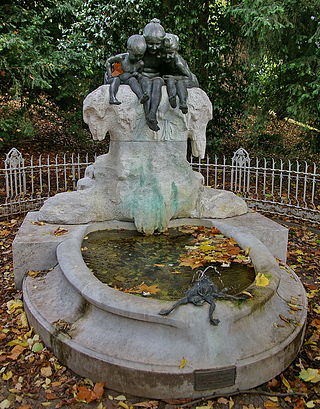
The fairytale fountain is located in the Hofgarten in Düsseldorf's Stadtmitte district.
Sight 18: Der Mahner
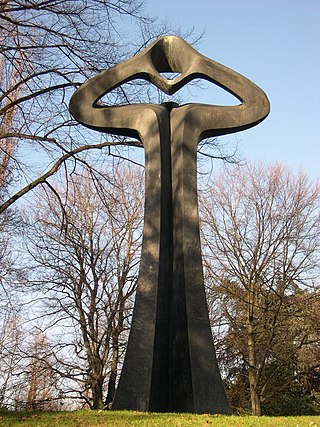
The Admonisher is the title of a bronze cast sculpture by Vadim Abramovich Sidur in the Hofgarten in Düsseldorf. The object, which is reminiscent of the biblical figure of the caller in the desert, is also interpreted as a memorial against totalitarianism and violence.
Sight 19: Monumento
Monumento, also known as Rumor de límites IX, is the title of a sculpture by the Spanish sculptor Eduardo Chillida. It is the first and first larger sculpture by the artist made of steel to be erected in Germany. To mark the 100th anniversary of the rolled steel factory Thyssen & Co., founded by August Thyssen, the property was donated to the city of Düsseldorf, the headquarters of one of the company's successors, and unveiled on July 8, 1971 in a green area at the Dreischeibenhaus in Düsseldorf-Stadtmitte.
Sight 20: Düsseldorfer Schauspielhaus
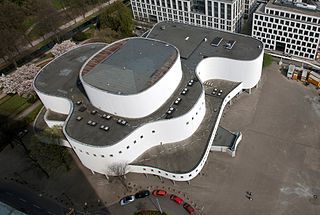
The Düsseldorfer Schauspielhaus is a theatre building and company in Düsseldorf. The present building with two major auditoria was designed by the architect Bernhard Pfau and built between 1965 and 1969. It opened in 1970.
Sight 21: Hofgärtnerhaus
The Hofgärtnerhaus is located on Jägerhofstraße within the Hofgarten in Düsseldorf. It is built in the Baroque style and houses the former Dumont-Lindemann Archive, today the theatre museum of the state capital. For the Baroness von Kö, the Court Gardener's House serves as the starting point for her city tours.
Sight 22: Theatermuseum
The Theatermuseum Düsseldorf is a regionally oriented museum in the North Rhine-Westphalian state capital of Düsseldorf. It is housed in the so-called Hofgärtnerhaus in the historic Hofgarten in the immediate vicinity of the Düsseldorf Schauspielhaus and the Deutsche Oper am Rhein. In February 2017, the museum was placed on the Red List by the German Cultural Council and classified as Category 1 and thus threatened with closure.
Sight 23: Aluminiumhaus
The listed aluminium house at Jägerhofstraße 29 in Düsseldorf-Pempelfort was built between 1952 and 1953 according to plans by Helmut Hentrich and Hans Heuser as a residential and office building for the Olga van Meeteren company. The employee was Hubert Petschnigg. The name is derived from the appearance of the building with the aluminium-clad building supports that vertically structure the glass façade.
Sight 24: Malkasten Park
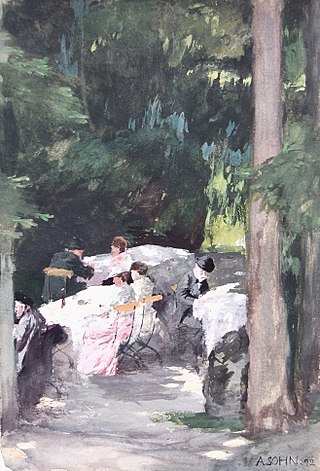
The Malkastenpark is a historic private park, now in the centre of Düsseldorf, North Rhine-Westphalia, Germany. The name refers to a group of artists, Malkasten, founded in 1848. The park is also known as the Jacobigarten, after the original owners who created a Baroque garden. It is now a public garden with both Baroque features and English landscape garden elements, and a listed historic monument.
Sight 25: Malkasten
Malkasten is a progressive German artists' association, founded in Düsseldorf in 1848, during the March Revolution. Since 1867, their headquarters have been in the Pempelfort district.
Sight 26: Malkasten-Haus
The Malkasten House is the social house of the Malkasten artists' association. It is located at Jacobistraße 6a in Düsseldorf-Pempelfort.
Sight 27: Schloss Jägerhof
The Schloss Jägerhof, formerly also called die Vénerie, is located at Jacobistraße 2 in Düsseldorf-Pempelfort, near the city centre. It was built between 1752 and 1763 by order of the Prince-elector Karl Theodor. At that time, the castle was still located outside the city gates. The palace is a point de vue of the Hofgarten riding avenue and the Jägerhofstraße. Since 1987, the castle has housed the Goethe-Museum and the Ernst Schneider Foundation.
Sight 28: St. Rochus
The Catholic Church of St. Rochus is located at Rochusmarkt 5 in the Düsseldorf district of Pempelfort. It is the successor to the Rochus Chapel, which was demolished at the end of the 19th century. The parish of the same name was founded in 1890/1891 and dissolved on 1 January 2013 by joining its historic "mother parish" Holy Trinity.
Sight 29: Industriehaus am Wehrhahn
The Industriehaus Düsseldorf is a listed office and commercial building in Düsseldorf-Pempelfort, Schirmerstraße 80/Am Wehrhahn.
Share
How likely are you to recommend us?
Disclaimer Please be aware of your surroundings and do not enter private property. We are not liable for any damages that occur during the tours.
GPX-Download For navigation apps and GPS devices you can download the tour as a GPX file.
